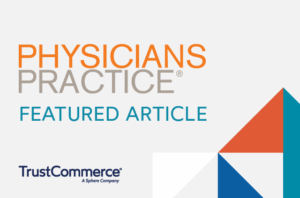Demystifying Healthcare Payments: Complexity, Change, and What’s Next
For patients, paying for healthcare rarely feels simple. Bills often arrive weeks or even months after care, with little clarity about what’s owed. Behind the scenes, insurers, providers, and financial intermediaries manage one of the most complex payment ecosystems in the U.S. economy.
The good news? New digital healthcare payment solutions, regulatory changes, and modern innovations are beginning to simplify the process, though challenges remain.
Who Pays for Healthcare?
High-deductible health plans, rising co-pays, and the growth of health savings accounts (HSAs) are shifting more financial responsibility onto patients.
- Many patients pay co-pays upfront, but these represent only a small portion of costs.
- Insurers still cover the majority, often 90% or more, depending on the type of care.
- Patients contribute indirectly through premiums or payroll deductions, but those funds don’t flow directly to providers.
Each visit generates a coded claim that must be submitted and adjudicated before payment is released. This complexity won’t disappear, but it underscores why healthcare payments require solutions that are both patient-friendly and operationally sound for providers.
The Role of Digital Innovation in Healthcare Payments
Despite being a $4.1 trillion industry, healthcare has historically lagged in IT investments, spending just 3–6% of revenue compared to 10% in financial services.
Larger health systems are rolling out:
- Text-to-pay options
- Card-on-file systems
- Digital wallets
Smaller practices, however, still rely on paper checks, phone calls, or even mailed credit card slips. For patients accustomed to managing everything else online, this outdated experience is frustrating.
Momentum is shifting with real-time payments, digital disbursements for refunds, and integrated patient portals. These innovations are reshaping the patient payment experience while improving provider efficiency.
Managing the Patient Payment Experience
Providers typically don’t bill patients until after insurance claims are processed, often months later. This leads to:
- Confusion over balances
- Delayed or unpaid bills
- Significant write-offs (sometimes 50–70% of balances, according to FinMed Partners)
Digital healthcare payments and new price transparency rules help providers collect earlier and offer clearer cost estimates. Still, most payments occur after the visit, making revenue collection a major financial risk.
Why Is Healthcare So Complex?
Unlike retail transactions, healthcare payments must navigate a web of insurers, regulators, IT systems, and intermediaries.
- Providers, pharmacies, and billing companies often operate on separate platforms.
- Federal and state regulations, HIPAA compliance, and IRS rules add additional layers of complexity.
Patients increasingly expect an experience comparable to retail or banking: fast, flexible, and transparent. Meeting those expectations is now a strategic imperative for healthcare providers.
Healthcare Payment Trends to Watch
Several trends are shaping the next chapter of digital healthcare payments:
- Patients as Payers – With more out-of-pocket costs, the payment experience now drives patient loyalty as much as clinical care.
- New Payment Modalities – Digital wallets, account-to-account transfers, and Buy Now, Pay Later (BNPL) are emerging in healthcare.
- Security as a Standard – With healthcare among the top industries for data breaches, tokenization and end-to-end encryption are essential.
Moving Toward Clarity in Healthcare Payments
The healthcare payments ecosystem will never be completely simple. But with digital tools, integrated platforms, and modern financing options, providers now have a growing toolkit to:
- Reduce friction for patients
- Improve revenue collection
- Strengthen trust through transparency
Modernizing healthcare payments is not just about efficiency, it is about sustainability. Providers can secure their financial health while delivering the clarity and convenience patients expect.
For a deeper look at these dynamics and what is next, download our whitepaper: Demystifying Healthcare Payments: A Practical Overview and watch our on-demand webinar.




